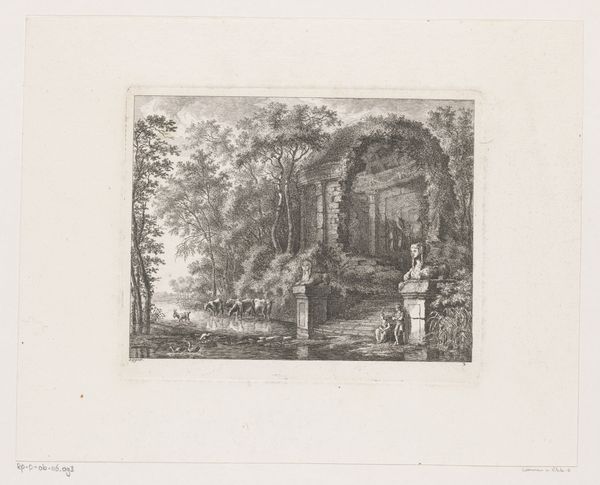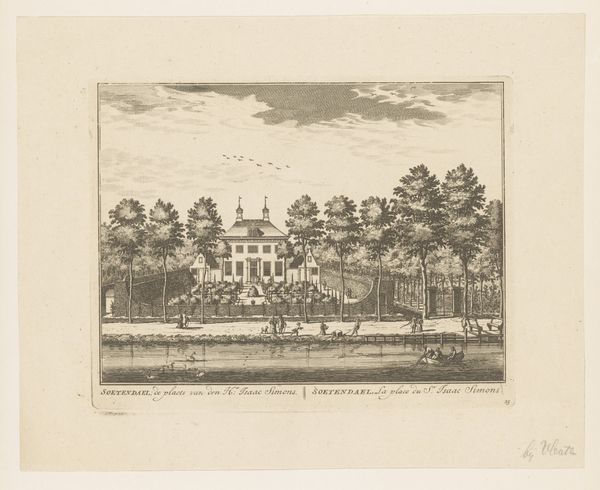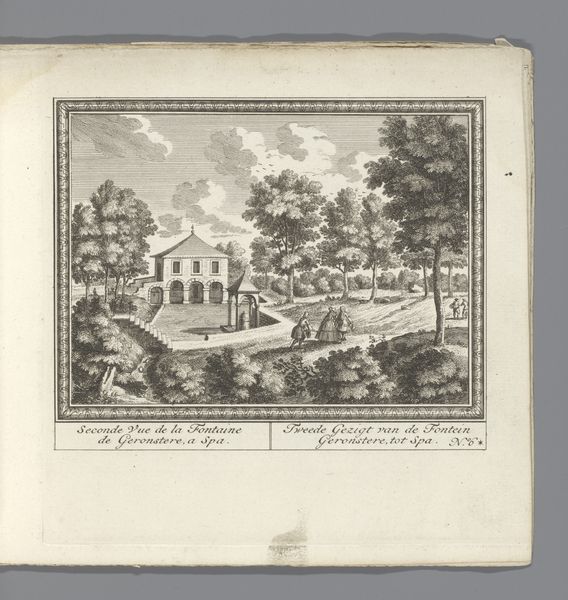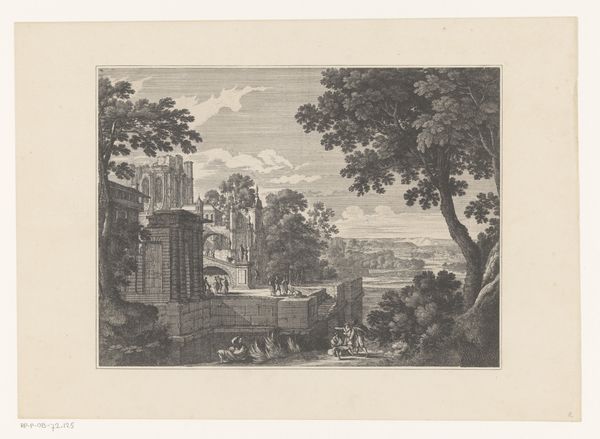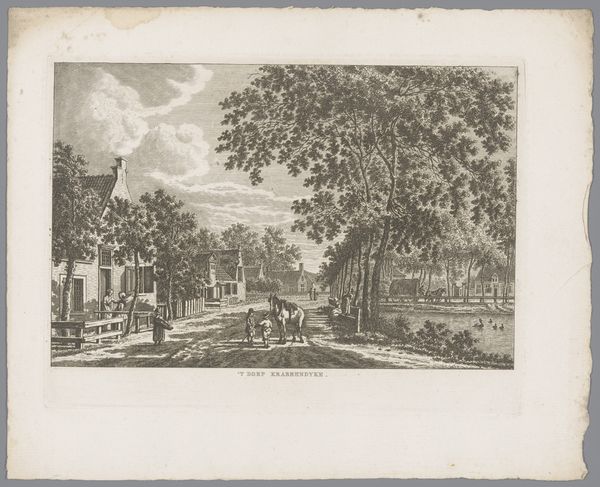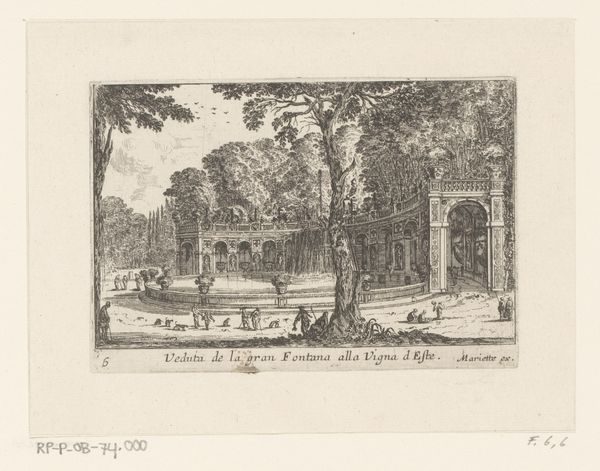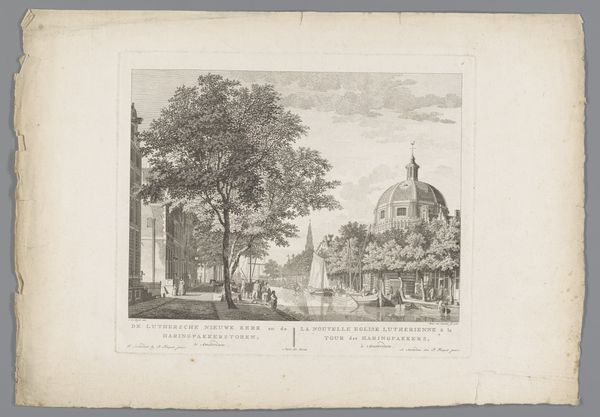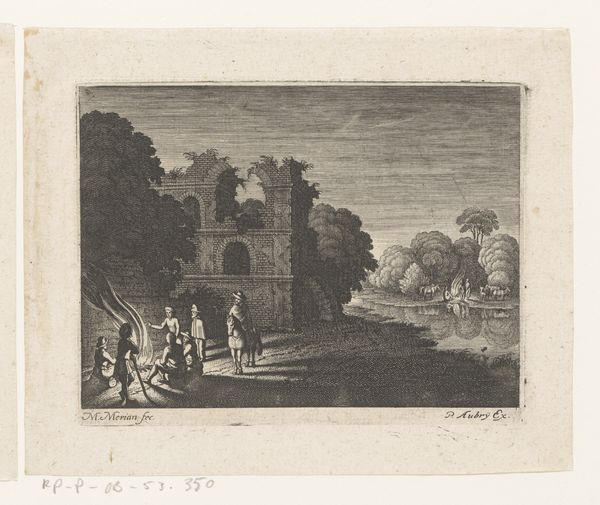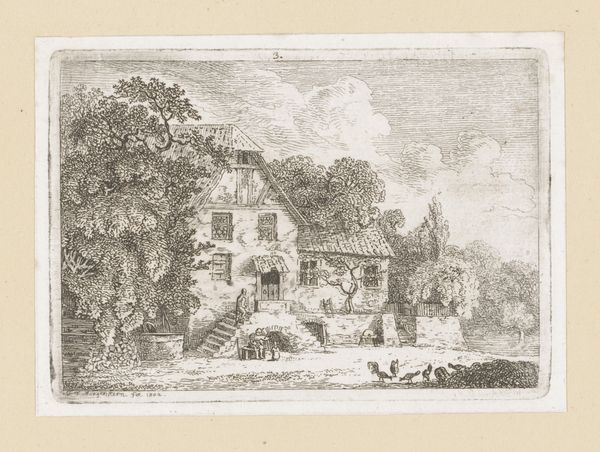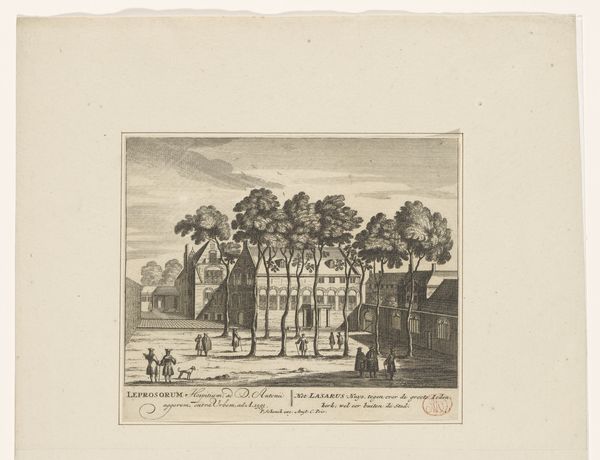
drawing, print, paper, ink, engraving
#
drawing
#
baroque
# print
#
landscape
#
paper
#
ink
#
cityscape
#
engraving
Dimensions: height 231 mm, width 285 mm
Copyright: Rijks Museum: Open Domain
Curator: We're looking at a print titled "Gezicht op Huis te Werve te Voorburg," made sometime between 1681 and 1728 by Cornelis Elandts. It combines engraving and ink on paper. The detailed landscape showcases a grand estate. Editor: It's lovely, actually! There’s a peaceful kind of order about it—though the detail almost verges on fussy. I keep wanting to breathe in and rustle those trees! I can almost feel the cool shade and smell the freshly turned earth of those baroque gardens. Curator: Absolutely. Let's consider Elandts's position as a printmaker. These images played a crucial role in circulating ideas about wealth and land ownership. Consider how printmaking, a relatively accessible medium, disseminated elite imagery. This image could be consumed widely. It normalizes this particular relationship to property and aesthetics. Editor: So, it's like baroque real estate porn, almost? Making those rolling lawns feel intensely desirable! I do get the sense there’s an element of wish fulfillment being manufactured in this rather orderly black ink on a white flat plane. Almost as if the scene wants to be more romantic than the artist has let it be! Curator: Interesting. For me, it’s very much tied to labor. Think of the sheer effort involved in managing such an estate—both the agricultural labor and also the labour behind the prints production and distribution. What does it suggest about the consumption patterns and the lives of the workers? Editor: True. It whispers stories of gardeners' aching backs and probably some exploited engravers working hard to keep that crisp precision! Perhaps that is what makes this drawing so compelling— it allows a moment for the privileged to project their existence on, yet it subtly reveals much about social inequality within these very clean, ornamental lines. The art of the visible *and* the invisible hands... Curator: Yes, and by examining Elandts's technical choices, the print’s composition, its frame... we can unpack the economic and social underpinnings of the era. Editor: A little morbid yet compelling. The ghostly baroque landscape, framed like that is almost ready for us to breathe into life again! Thanks for the context!
Comments
No comments
Be the first to comment and join the conversation on the ultimate creative platform.

